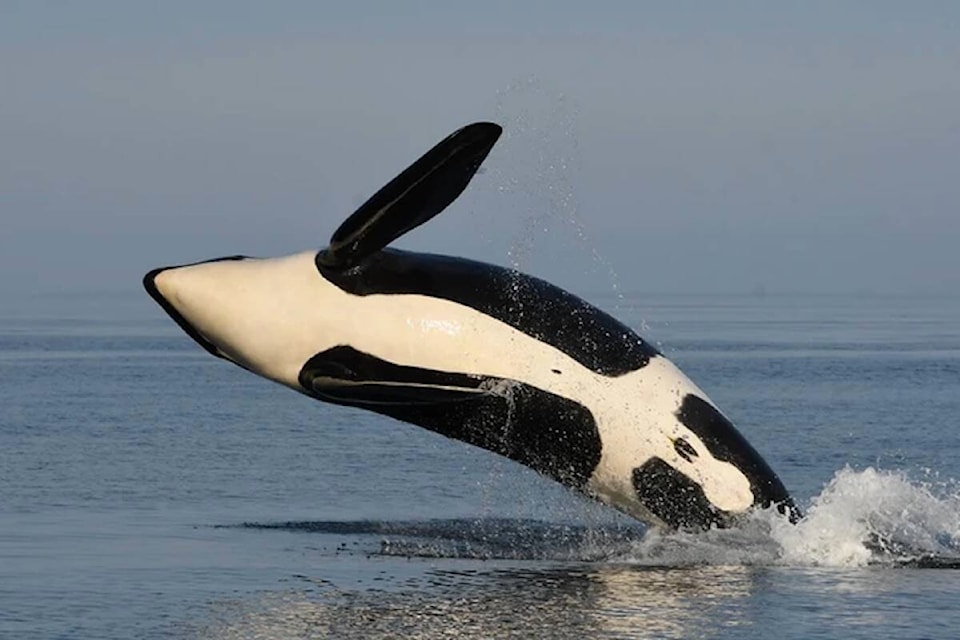There’s a lot of racket below the Salish Sea’s surface and those noise levels are set to get louder as marine traffic increases along B.C.'s busy south coast –thanks to the new Lower Mainland developments such as the Trans Mountain pipeline expansion's completion.
It's been well documented that human-made ocean noise masks the ability for echolocation-reliant whales and dolphins to communicate. A lead marine conservation specialist with World Wildlife Fund Canada (WWF) confirms that current ocean noise levels from human activities on the water – like industrial operations, travel and shipping – can hinder marine species' ability to find food, avoid danger or navigate their surroundings.
“It’s like an acoustic smog that clouds their ability to sense their environment,” said Hussein Alidina.
Alidina said scientists are now learning more about how the noise also impacts fish and invertebrate species. Increasing noise also becomes another challenge for endangered Southern Resident killer whales, which already face cumulative threats from food scarcity and environmental contaminants, the conservationist added.
As Canada formulates a plan to safeguard marine ecosystems from what it calls the "complex threat" of ocean noise, World Wildlife Fund is concerned those proposed efforts lack tangible noise-reducing actions, along with timelines showing when those will come into effect.
The federal government unveiled its draft Ocean Noise Strategy at the end of August, which is currently undergoing a 60-day consultation period that will inform a final strategy set to be released next year. The feds say the plan will guide efforts to mitigate the impacts of ocean noise through science, innovation, management and communication.
"The Government of Canada is committed to protecting our oceans and the diverse life they contain," Federal Fisheries and Oceans Minister Diane Lebouthillier said in an Aug. 23 news release. "The development of Canada’s Ocean Noise Strategy is a critical step to safeguarding the diverse species that call our oceans home."
The draft plan includes 20 recommendations split up across three themes, the first of which largely deals with bolstering Canada's understanding of ocean noise and its impacts.
The first theme's recommendations include supporting technology that reduces noise at its source. On that topic, the feds point to new technology, vessel designs, retrofits and operational practices being tested through their Quiet Vessel Initiative, which aims to address the impact of noise on vulnerable marine mammals – notably Southern Resident killer whales.
Alidina said the technology incentives in the draft plan come up short and it should've included mandates for ships to be designed in way that makes them quieter. He said those kind of regulations have been shown to spur results and, as an example, pointed to how government-imposed requirements quelled harmful pollutants from vehicle tailpipe emissions decades ago.
Other recommendations in the draft strategy relate to: assessing noise risks of marine activities and projects; increasing coordination between stakeholders; enhancing compliance of mandatory noise regulations; working with the international community to protect marine species; and creating a Canadian framework that defines the ocean noise management responsibilities of different federal departments.
As the federal government looks to learn more about the commotion below the sea's surface, new research shows the noise from boats and vessels is disrupting killer whales' ability to find and capture food. A study published in September in Global Change Biology, a scientific journal, looked at the impacts of ocean noise on Northern and Southern Resident killer whales in B.C. and Washington state waters. As noise levels increased, the study found the fish-eating whales' foraging success decreased.
"These results reveal that vessel noise reduces foraging opportunities and that the likelihood of interference with foraging success scales positively with noise level," the study's authors wrote.
The killer whales spent more time searching for food in noisier conditions, which reduced foraging efficiency, the study found. It also found some variation across the sexes, such as females forgoing the pursuit of prey as noise levels increased, but both males and females faced reduced odds of catching their meal the louder it got.
The researchers said their findings underscore the importance of managing soundscapes to achieve marine conservation goals.
WWF's Alidina said Canada needs a coordinated approach to deal with underwater noise, so the federal strategy is an important piece. However, his organization said the draft version lacks clarity around enforcing noise limits and implementing regulations.
“We do need some additional regulation around water noise to treat it as a pollutant, but we aren’t doing that right now and it’s not clear from the strategy when that’s going to happen and how it’s going to happen,” he said.
Abuzz with shipping traffic, ferries and lots of boats big and small out on the water, WWF highlighted that B.C.'s south coast is an excessively loud aquatic area in Canada. That area also hosts critical habitat for endangered killer whales.
“It’s already difficult for Southern Residents to find food under these conditions,” Alidina said as he called the orcas an indicator species that will hint at how other marine life may be impacted by underwater noise.
He commended existing initiatives such as the Port of Vancouver's ECHO program, which sees ships voluntarily slow down in key Southern Resident foraging and breeding grounds. But Alidina said those seasonal slowdowns only reduce decibels by about a third of what's needed. His organization wants the feds to establish noise limits on harmfully loud marine activities and set reduction targets for especially noisy ocean areas such as the Salish Sea.
“This is the place where we need to see noise limits and have noise targets come into effect to move it back to a place that is healthy and conducive to recovery, and for wildlife to thrive,” he said.

